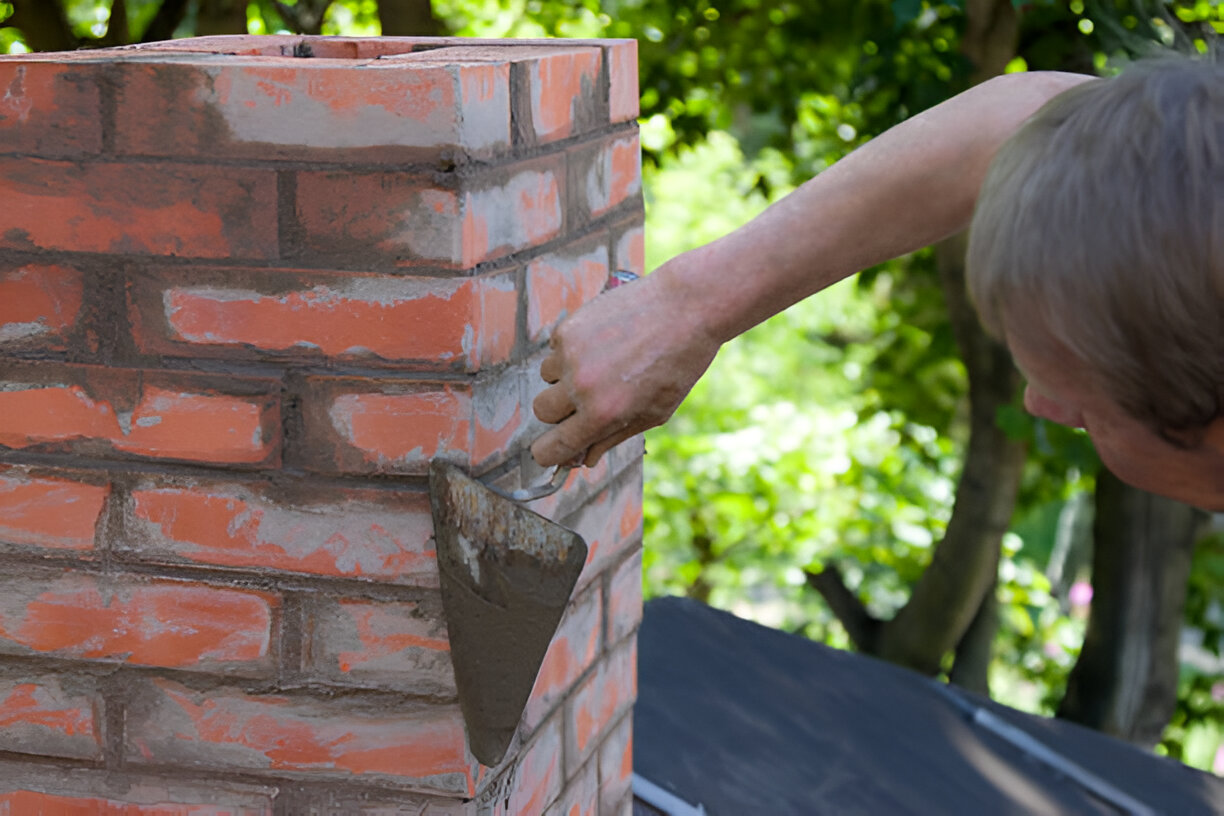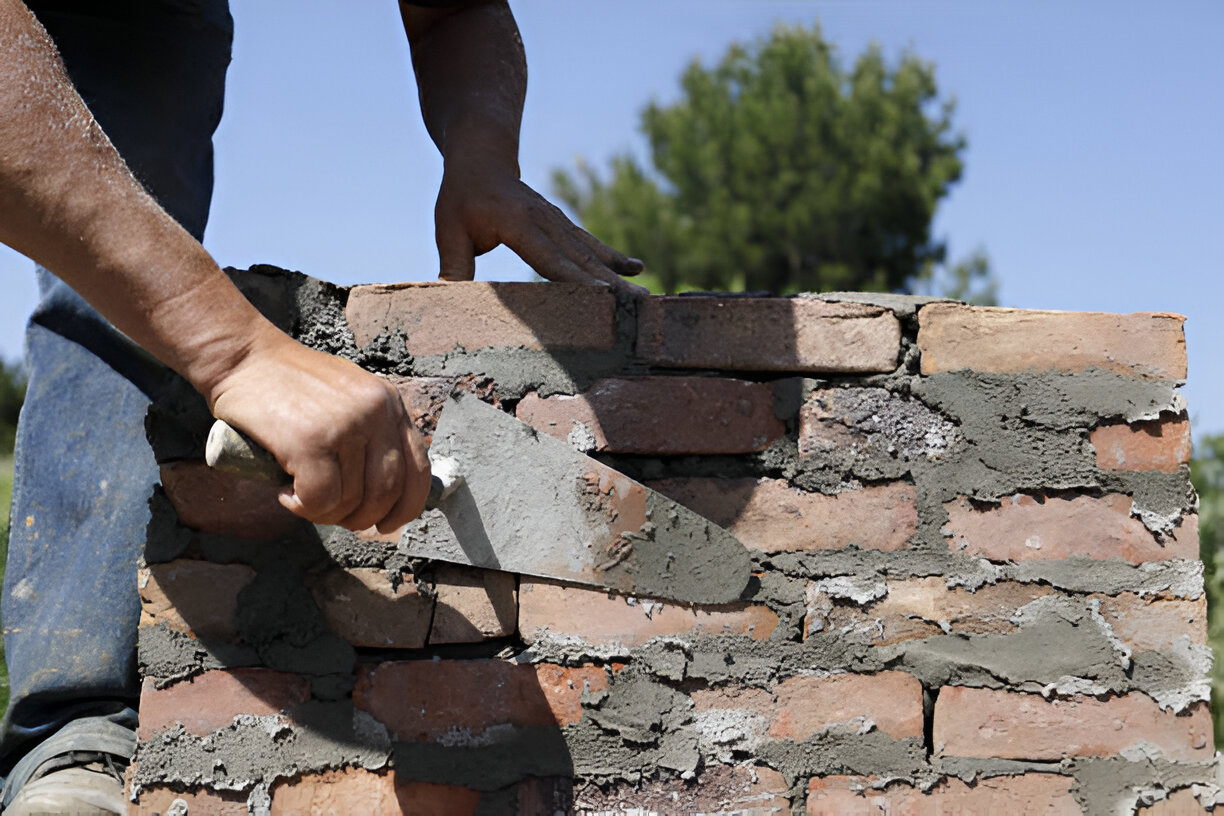Your chimney is one of the most visible and vulnerable parts of your home. It stands exposed to rain, snow, wind, and extreme temperature shifts year-round. Over time, various elements can damage the mortar holding your chimney bricks together. This is where tuckpointing becomes essential.
If you've noticed cracking mortar, loose bricks, or signs of water damage around your chimney, you may need tuckpointing to prevent more serious (and expensive) problems down the line.
At Firesafe Chimney Services, we help Worcester, MA homeowners restore their chimneys with professional tuckpointing that strengthens masonry and prevents structural failure. In this guide, we’ll explain everything you need to know from what tuckpointing is to why it's one of the most important investments you can make for your home.
Key Takeaways
- Tuckpointing is the process of removing damaged mortar joints and replacing them with fresh mortar to strengthen and preserve your chimney.
- It's necessary when mortar shows signs of cracking, crumbling, or gaps—especially common in Worcester's freeze-thaw climate.
- Tuckpointing is less costly than a full chimney rebuild but requires skilled craftsmanship, making it a worthwhile investment.
- DIY tuckpointing is risky and often results in poor sealing, structural damage, or mismatched mortar—it's best left to professionals.
- Professional tuckpointing protects your chimney from water intrusion, structural failure, and long-term deterioration.
What is Chimney Tuckpointing?

Tuckpointing is the process of removing deteriorating mortar from a brick chimney and replacing it with new, color-matched mortar. This technique restores both the chimney’s structural strength and aesthetic appearance, extending its lifespan.
The process involves two key steps:
- Grinding out the old, crumbling mortar
- Refilling joints with fresh mortar, often with a second contrasting color to mimic the original tight joints for a neat finish
The term “tuckpointing” is often confused with “repointing.” While both involve mortar replacement, tuckpointing is more refined as it includes adding a thin, contrasting line (called a “tuck”) to create the illusion of perfectly formed joints. This was originally done for aesthetic reasons and is still used today to restore historic or high-visibility masonry.
In chimneys, tuckpointing serves a critical structural function, protecting the brickwork from water infiltration and damage.
When is Tuckpointing Required?
Mortar doesn’t last forever. While bricks can endure 100+ years, mortar joints often begin deteriorating in just 20 to 30 years, especially in areas with harsh winters.
Signs your chimney needs tuckpointing include:
- Cracks or holes forming between bricks
- Mortar flaking, chipping, or missing entirely
- Bricks shifting or feeling loose to the touch
- White powder (efflorescence) forming on the masonry
- Visible water damage inside your home near the fireplace
- Increased moisture or musty smells in the chimney
If left unchecked, damaged mortar can lead to chimney leaks, brick disintegration, and ultimately, chimney collapse. In severe cases, deteriorated chimneys can become a fire hazard or result in costly rebuilds.
How Much Does Tuckpointing Cost?
Many homeowners are surprised at the investment required for tuckpointing, but here’s why it’s not a quick patch job:
- It requires specialized masonry skills and attention to detail
- Matching existing mortar color and texture is time-consuming
- Old mortar must be carefully ground out without damaging the brick
- Chimneys are often tall and difficult to access, requiring ladders, scaffolding, or roof harnesses
- Proper curing techniques must be followed for long-term durability
While we don’t list specific prices (since every chimney is unique), tuckpointing is considered a mid-range repair among chimney repair services. The good news? It's significantly more affordable than a full rebuild—and helps prevent it.
When you hire Firesafe Chimney Services, we give you a clear assessment, explain the scope of work, and help you understand the long-term value.
Check our Chimney Services here.
Can I DIY Tuckpointing My Chimney?
We often hear this question, and while DIY projects can save money in some areas of the home, chimney tuckpointing isn’t one of them.
Here’s why tuckpointing is best left to professionals:
- Safety Risks: Chimney work often involves the use of ladders or scaffolding, which can be at dangerous heights. Falls are one of the most common home-repair accidents.
- Specialized Tools: Professional masons use diamond grinders, joint rakers, and mortar mixers that aren’t typically found in home toolkits.
- Material Matching: Using the incorrect mortar mixture can cause thermal expansion issues, resulting in cracks in the brick.
- Improper Application: Filling joints unevenly or too shallowly can cause moisture infiltration and accelerate future damage.
- Aesthetic Damage: Poorly executed tuckpointing doesn’t just fail, it can make your chimney look worse.
Bottom line: a DIY attempt can cost you more in the long run if it leads to structural damage or a failed inspection.
The Tuckpointing Process: What to Expect
At Firesafe Chimney Services, we follow a step-by-step professional process designed to ensure long-lasting, code-compliant repairs that match your existing chimney’s appearance.
1. Inspection and Assessment
We begin by thoroughly examining the chimney to evaluate the extent of mortar damage. This helps us determine if tuckpointing is appropriate or if more serious repairs are needed.
2. Mortar Removal
Using precision grinders and chisels, we remove the damaged mortar between the bricks to a specified depth, taking care not to crack or weaken the bricks themselves.
3. Mortar Matching
We mix fresh mortar to match the existing color, texture, and composition of the original material. This is crucial for both visual continuity and structural compatibility.
4. Joint Repacking and Tuckpointing
New mortar is carefully packed into the joints. In decorative tuckpointing, a narrow contrasting line is applied to give the illusion of uniform brick joints.
5. Curing and Finishing
The mortar is tooled and smoothed, then allowed to cure for maximum strength and resistance to moisture.
You’ll be left with a chimney that looks like new and is protected from water, wind, and time.
Benefits of Chimney Tuckpointing
Tuckpointing done right protects your chimney from the most common and costly problems homeowners face.
Key benefits include:
- Stops water from entering the chimney
- Extends the life of your chimney and fireplace
- Restores structural integrity to prevent collapse
- Protects against mold, mildew, and interior water damage
- Saves thousands by avoiding full rebuilds
- Improves home resale value and inspection readiness
- Enhances your home’s exterior appearance
Whether your chimney is 10 years old or 100, regular maintenance and timely tuckpointing ensure that it continues to function safely and look its best.
Conclusion
Tuckpointing is one of the most effective ways to maintain the health and stability of your chimney. It reinforces aging mortar, prevents water damage, and helps your chimney withstand the elements year after year. While it may seem like a small detail, addressing worn mortar early can save you from major repairs and extend the life of your entire chimney system.
Preserve Your Chimney with Firesafe Chimney Services in Worcester, MA
If you’ve spotted signs of mortar failure or haven’t had your chimney inspected in several years, now is the time to act. At Firesafe Chimney Services, we’re known across Worcester for expert chimney care built on craftsmanship, safety, and honesty. We’ll inspect your chimney, walk you through your options, and provide durable, professional tuckpointing that stands up to Massachusetts weather for years to come.
Don't wait for minor mortar damage to become a major headache. Protect your home and ensure the longevity of your chimney. Contact Firesafe Chimney Services today for a comprehensive inspection and a no-obligation estimate for professional tuckpointing services in Worcester, MA.
Frequently Asked Questions
Q1. How often should a chimney be tuckpointed?
A: Chimney tuckpointing typically lasts 20–30 years, depending on weather exposure, chimney use, and maintenance. In areas like Worcester, MA, where freeze-thaw cycles are frequent, you may need to tuckpoint sooner. Annual inspections help catch deterioration early.
Q2. Can tuckpointing stop chimney leaks?
A: Yes. Damaged mortar joints allow moisture to penetrate the brickwork, which can lead to leaks. Tuckpointing seals those gaps and creates a water-resistant barrier, helping prevent chimney leaks and protecting both interior and exterior structures.
Q3. Is tuckpointing covered by homeowners insurance?
A: Generally, no tuckpointing is considered preventive maintenance or a repair for wear and tear. However, if chimney damage is caused by a covered event like a storm or falling tree, your policy may cover associated repairs. Always consult your insurer.
Q4. What happens if I delay tuckpointing?
A: Delaying tuckpointing can lead to serious issues like loose bricks, water intrusion, structural failure, and even a full chimney collapse. Early intervention with tuckpointing is far more affordable than a complete rebuild or water damage restoration.












